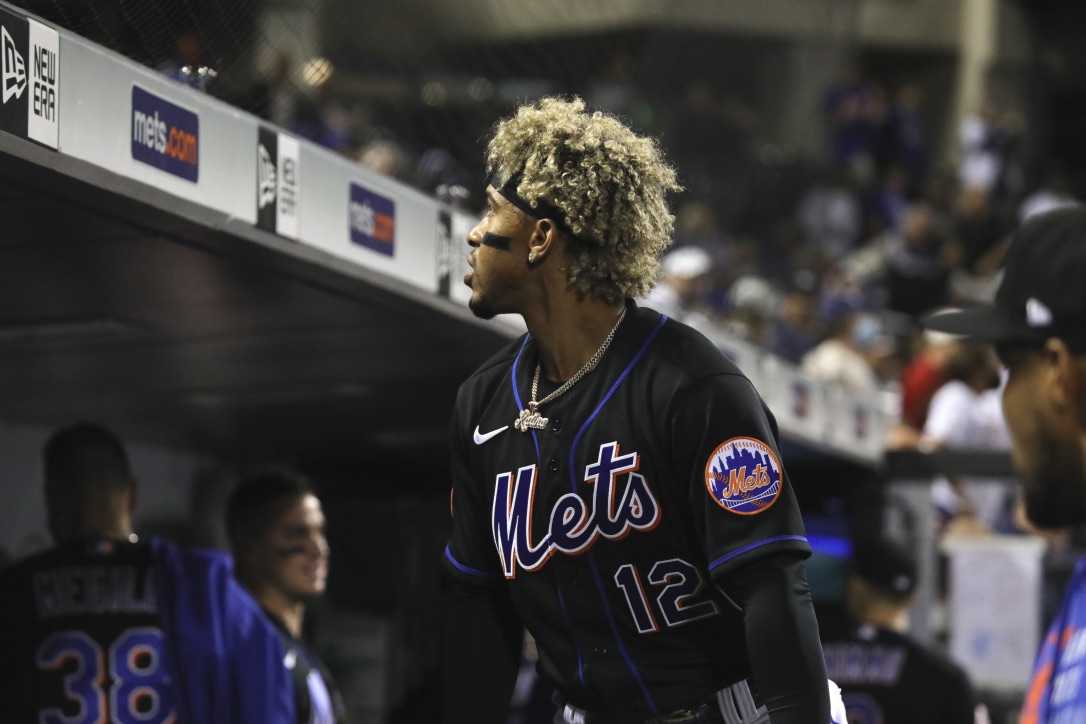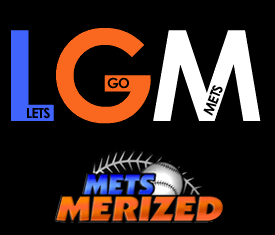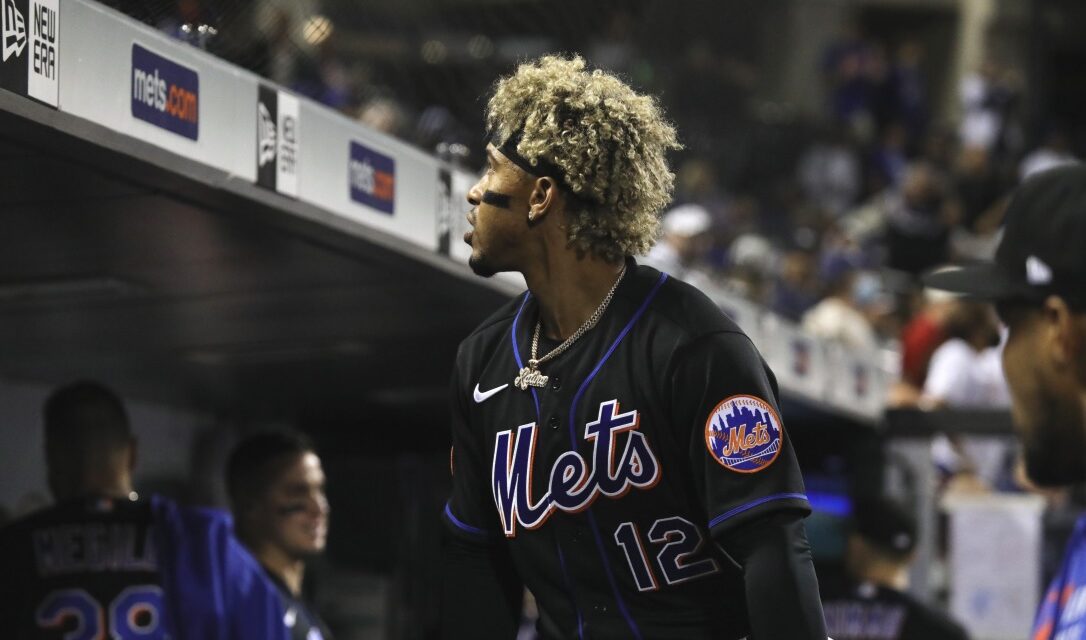
Photo by Chris Simon
New York Mets shortstop Francisco Lindor had himself an eventful first year in Queens.
Between signing a historic extension, a horrific start at the plate, the ratcoon incident, the thumbs-down fiasco, and playing with best friend Javier Báez, there was plenty for him to reflect upon this offseason. While he provided Gold Glove-caliber defense and his offensive production bounced back after a terrible April and May, it was definitely a roller coaster for the 28-year-old.
He did post a 2.7 fWAR with 20 home runs, 63 RBI, 73 runs scored, and 10 stolen bases in 524 plate appearances, but his other season-long stats didn’t look so hot. It included a .230/.322/.412 line to go along with a just-barely-above-average 103 wRC+. Can he bounce back with a more typical season in 2022? The answer to that question will likely vary depending on who you ask, but for early projections from Steamer and ZiPS, the current answer is yes.
Current 2022 Projections
As it currently stands, FanGraphs’ depth-chart projections have Lindor and the Mets with the sixth-highest projected fWAR for the 2022 season. After finishing with the 12th-highest mark in 2021, that’d be a welcome improvement. If we drill the projections down to Lindor specifically, though, both models are expecting the shortstop to rebound.
Steamer is projecting a .252/.329/.463 line with 30 home runs, 93 RBI, 89 runs scored, and 13 steals, which would lead to a 116 wRC+ and a 4.5 fWAR. ZiPS is not too different in the rate statistic categories. Lindor is projected for a .263/.347/.467 line with a 119 OPS+ and 4.7 fWAR, but the counting stats are a little different, including 25 homers, 74 RBI, 87 runs scored, and 16 stolen bases.
Lindor obviously couldn’t reach these counting stats in 2021 because he spent time on the Injured List and appeared in only 125 games (524 plate appearances). His rate stats, overall offensive production, and fWAR projections are a drastic improvement from last year, so exactly how realistic are they?
Measuring Them Up to His 2021 Production
MLB’s regular season is (usually) six months long. It doesn’t matter what a player did or didn’t do in certain months — they all count the same. However, in Lindor’s case, it’s clear that he had two very different experiences if June 1st is used as the marker.
Through his first 200 plate appearances as a Met, he slashed a horrendous .194/.294/.294 with four homers, 11 RBI, and 22 runs scored, which led to a 70 wRC+ and 0.2 fWAR. Over his final 324 trips to the plate (which included losing about a month because of injury), the numbers looked more like his career norms. He slashed .252/.340/.482 with 16 homers, 51 RBI, and 52 runs scored, which led to a 124 wRC+ and 2.5 fWAR.
During the final four months of play, Lindor compiled a .822 OPS, a .230 Isolated Power (ISO), and a .272 BABIP. Those are either better or mostly on par with what he’s produced since debuting in 2015 (he owns a career .821 OPS, a .200 ISO, and .292 BABIP, with the BABIP being above .280 just once since 2017).
Steamer is projecting a .793 OPS, a .211 ISO, and a .264 BABIP in 2022. ZiPS is projecting a .814 OPS, a .205 ISO, and a .284 BABIP. While he didn’t reach these numbers in 2021, he’s either met or surpassed them during the majority of his career. And, if we look at the last four months of 2021 when he was more or less back to himself at the plate, he reached them quite easily.
Taking a Historical Perspective
Even with a sub-par year by many standards, Lindor made some history in 2021 regarding Mets shortstop production:
In 2021, Francisco Lindor became the first #Mets shortstop (min. 75% played at SS) to hit 20 homers & steal 10 bases in a season. https://t.co/DZtqgE4UFJ
— Mathew Brownstein (@MBrownstein89) January 7, 2022
The current franchise record for homers at shortstop is held by Asdrúbal Cabrera when he hit 23 in 2016. The franchise record for RBI by a shortstop in a single season is 81, which José Reyes accomplished in 2006. The current baseline projections for Lindor have him either passing or coming very close to passing those numbers in 2022.
There have only been four different seasons of a Mets shortstop producing 4.0-plus fWAR. Reyes has registered every single one, with at least 5.0 fWAR in 2006, 2007, 2008, and 2011. The next player behind Reyes on this leaderboard is Bud Harrelson, who accumulated 3.8 fWAR in 1971 off the strength of his defense. So if these projections come true with regard to overall value, Lindor could easily produce a top-five shortstop season in Mets history.
We were having similar discussions like this last winter when projections came out, and Lindor obviously fell short. However, there probably weren’t many people out there expecting him to suffer through the kind of slow start that he did. It would’ve been easy for him to get caught up in these struggles and have them last all year, but he found a way out. While his season-long stats didn’t recover in many areas, his ability to snap out of it showed he can handle the pressures that New York can bring regarding results on the field.
With a year in Queens under his belt, it’ll be interesting to see what Lindor brings to the table for the Mets 2022, and how it’ll ultimately be viewed within the franchise’s historical context at his position.
















